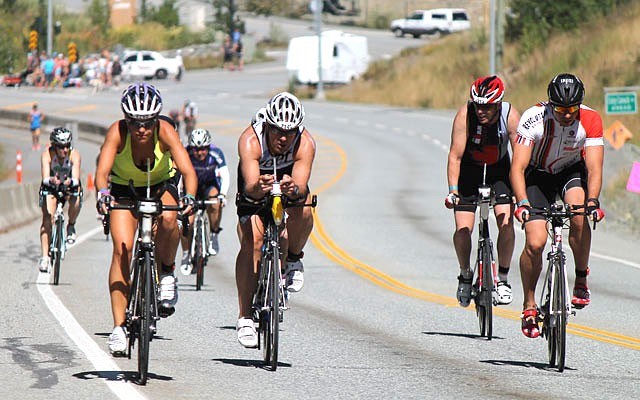With Ironman less than a month away, the shoulders of the Sea to Sky Highway are starting to come alive with triathletes in the home stretch of their training.
But with the warm, dry conditions to this point, some are finding the highways unfit for training.
Squamish's Tim Moore has been racing as an Ironman for 15 years. He's currently ramping up for the big event in Whistler July 26.
"I've been riding up and down the highway for the past six seasons, and by far the grit is heaviest this year," Moore said. "It makes it more dangerous to be on the highway."
Talking to a representative of Miller Capilano Maintenance Corporation — the company contracted to maintain the highway between Whistler and Lions Bay — Moore found the problem has been exacerbated this year by increased construction and a lack of rain.
According to Ministry of Transportation spokesperson Kate Trotter, the maintenance agreement the province has with Miller Capilano specifies that multi-lane segments of highway through urban areas be swept every 120 days.
"(But) the ministry and the maintenance contractor are committed to ensuring that the highway is swept more often... to double the frequency of sweeping on provincial highways in areas with a high volume of cyclists," Trotter said in an email.
A full sweep of the highway was completed back in May, with another planned for later in July.
"The ministry works with event organizers to ensure that the highway, and all sections that require it, are swept before major cycling events such as Ironman on July 26 and GranFondo on September 12," Trotter said.
The highway between Whistler and Pemberton is maintained by Mainroad. The company was unable to provide comment before deadline.
Evan Taylor, race director for Ironman Canada, said he hadn't heard anything about athletes having trouble training on the highway, but Ironman works with the ministry to coordinate sweeping schedules ahead of the event.
"We also go out there with backpack blowers and even hand brooms and shovels ourselves and really fine tune 180 kilometres of road to make sure that it's good, even to the point that we take out a little bit of asphalt patching and patch it ourselves," Taylor said. "We literally go over the course with a fine tooth comb."
That's good news for those who will be competing in Ironman, but the problem of unswept shoulders in the leadup to the event speaks to a bigger issue now facing the corridor — how to accommodate both cycles and vehicles?
"I do think more thought overall can be made on how to make the highway safer," Moore wrote in a follow-up email.
"I'm not expecting anyone to rebuild the highway for cyclists but when upgrades are planned, even resurfacing, we need to be taken into consideration."
Simple design solutions can make all the difference for cyclists — Moore suggested wider shoulders and gaps in the concrete barriers to allow grit to leave the road — but in the meantime everyone will have to learn to coexist.
"I know that some drivers complain about cyclists. And cyclists complain about drivers. That's not going to end," Moore said.
"There will always be some disagree of conflict. But efforts can be made to minimize them and it doesn't cost millions of dollars."




